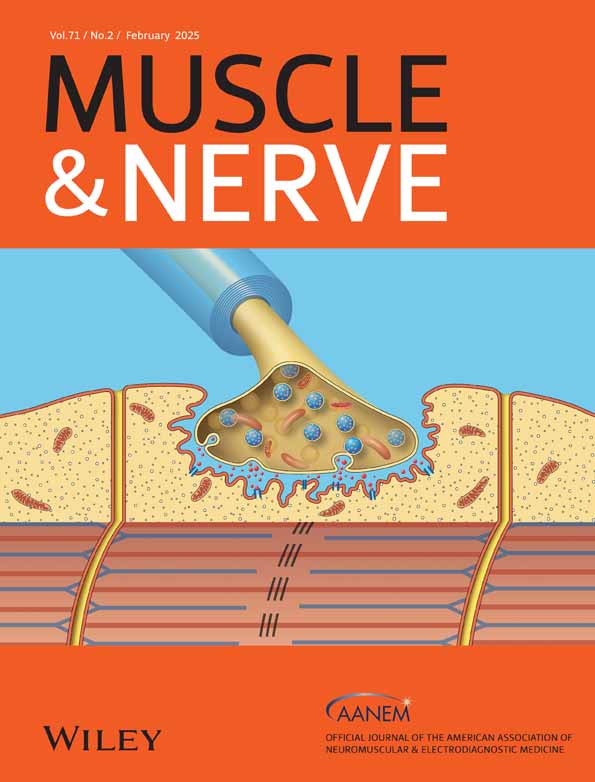Polyneuropathy With Motor Conduction Block in POEMS
Funding: The authors received no specific funding for this work.
This manuscript was presented as an oral presentation at the 38th National Clinical Neurophysiology EEG-EMG Congress on 26–30 October 2022.
ABSTRACT
Introduction/Aims
Polyneuropathy, organomegaly, endocrinopathy, monoclonal gammopathy, and skin changes (POEMS) syndrome is a paraneoplastic syndrome due to an underlying plasma cell dyscrasia. Polyneuropathy in POEMS syndrome may present as a subacute or chronic symmetric sensorimotor polyneuropathy, with electrophysiological features suggesting demyelination. Motor conduction block (CB), which is mostly seen in chronic inflammatory demyelinating polyneuropathy (CIDP), is considered an atypical electrophysiological feature in POEMS syndrome. We examined the frequency of motor CB in POEMS syndrome.
Methods
Patients with POEMS syndrome from the database of our department who had been examined between August 2017 and December 2022 were included in this study. All of the patients' clinical and electrophysiological data were retrospectively collected and analyzed.
Results
We present the data of seven POEMS syndrome patients. Twenty-eight upper extremity motor nerve conduction studies were performed on these patients, and partial CB was detected in seven upper extremity motor nerves (25%) of six of the patients. One patient had motor CB in both the median and ulnar nerves.
Discussion
The distinction between POEMS syndrome and CIDP is important since these conditions require different treatments. Motor CB in POEMS may be more common than has been generally believed. Clinicians should consider this when evaluating patients with demyelinating polyneuropathies and be meticulous in identifying CB. Data from much larger numbers of patients are needed.
Conflicts of Interest
The authors declare no conflicts of interest.
Open Research
Data Availability Statement
The data that support the findings of this study are available from the corresponding author upon reasonable request.




